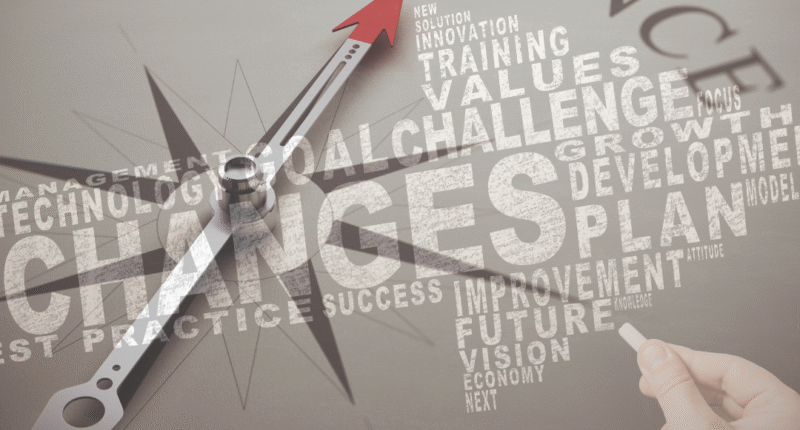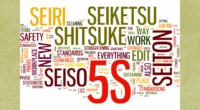Operational excellence is the foundation of sustainable business success. It means creating systems that consistently deliver high performance, efficiency, and quality while minimizing waste. To achieve this, organizations rely on practical tools that make improvement measurable and repeatable.
Below are seven essential tools for operational excellence, complete with explanations and real-world examples of how each one helps businesses streamline processes and achieve continuous improvement.
1. Lean Methodology
Lean is one of the most powerful frameworks for achieving operational excellence. It focuses on delivering value to the customer while eliminating waste — anything that does not add value to the end product or service.
How Lean Works
Lean uses principles such as value stream mapping, flow optimization, and pull systems to create smoother operations and reduce unnecessary effort.
Example:
A packaging company noticed long idle times between production stages. After applying Lean tools, they reorganized their workflow to ensure continuous product flow, reducing lead time by 30% and increasing on-time delivery rates.
Key takeaway:
Lean turns inefficiency into opportunity by simplifying processes and empowering teams to focus on what truly matters — customer value.
2. Six Sigma
Six Sigma is a data-driven approach focused on minimizing process variation and defects. It uses the DMAIC framework — Define, Measure, Analyze, Improve, and Control — to drive measurable improvements.
When to Use Six Sigma
This tool is ideal for industries that depend heavily on precision and quality, such as manufacturing, healthcare, and finance.
Example:
A medical device manufacturer used Six Sigma to analyze production defects. Through root cause analysis and process controls, they reduced product rejection rates from 4% to 0.8%, saving thousands in rework costs.
Key takeaway:
Six Sigma turns complex problems into structured, data-backed solutions that enhance product quality and customer satisfaction.
3. 5S Workplace Organization
The 5S system — Sort, Set in Order, Shine, Standardize, Sustain — is a foundational Lean tool designed to create clean, organized, and efficient workplaces.
Why 5S Matters
A cluttered workspace causes delays, errors, and wasted effort. 5S ensures that tools, materials, and equipment are always in the right place for maximum productivity.
Example:
A small auto repair shop implemented 5S to organize tools and workstations. Before 5S, mechanics spent time searching for parts. After implementation, tool retrieval time dropped by 40%, leading to faster service turnaround and happier customers.
Key takeaway:
5S builds discipline and visual management — two critical traits for sustaining operational excellence.
4. Kaizen (Continuous Improvement)
Kaizen, a Japanese term meaning “change for the better,” is a philosophy of continuous, incremental improvement involving everyone in the organization.
The Power of Small Steps
Instead of waiting for large-scale changes, Kaizen focuses on small daily improvements that add up to big results over time.
Example:
A food processing plant encouraged operators to suggest one small improvement each week. Over a year, these ideas — from improved labeling systems to layout changes — boosted productivity by 12% without major investments.
Key takeaway:
Kaizen builds a culture where every employee contributes to ongoing progress, not just management or specialists.
5. Value Stream Mapping (VSM)
Value Stream Mapping is a visual tool used to analyze and improve the flow of materials and information through a process. It helps organizations identify bottlenecks, waste, and areas for improvement.
How VSM Helps
By mapping every step of a process, teams can see where time, resources, or effort are lost — then design an improved “future state” process.
Example:
A logistics company used VSM to map its order fulfillment process. They discovered redundant paperwork and unnecessary approval steps that slowed delivery. After streamlining, order cycle time dropped from 5 days to 3.
Key takeaway:
VSM provides a clear “big picture” of your process, enabling smarter decisions about where to focus improvement efforts.
6. Root Cause Analysis (RCA)
When problems arise, Root Cause Analysis ensures you fix the cause, not just the symptom. Tools like the 5 Whys or Fishbone (Ishikawa) Diagram help teams dig deeper into the underlying issues behind failures or inefficiencies.
Why RCA Is Critical for Excellence
Without identifying the root cause, problems reoccur — wasting time and resources. RCA enables long-term, sustainable solutions.
Example:
A textile company faced recurring machine breakdowns. By applying the 5 Whys technique, they found that poor maintenance scheduling — not the machines themselves — caused the problem. Implementing a preventive maintenance plan eliminated 80% of breakdowns.
Key takeaway:
Root Cause Analysis promotes smarter problem-solving and prevents repetitive errors that drain productivity.
7. PDCA (Plan-Do-Check-Act) Cycle
The PDCA cycle is a simple yet powerful framework for continuous improvement. It encourages teams to test changes, measure outcomes, and make adjustments before fully implementing solutions.
How PDCA Works
-
Plan: Identify a goal or problem and create a plan.
-
Do: Implement the plan on a small scale.
-
Check: Measure and analyze the results.
-
Act: Standardize the improvement if successful or try again with adjustments.
Example:
A retail store used PDCA to improve customer checkout speed. After testing a self-checkout system, they reviewed data showing a 20% faster transaction time. Based on the results, they rolled it out across all branches.
Key takeaway:
PDCA creates a learning culture where experimentation and feedback drive steady improvement.
Conclusion
Operational excellence isn’t achieved overnight — it’s built through the consistent use of the right tools and a culture that values improvement.
The seven essential tools — Lean, Six Sigma, 5S, Kaizen, Value Stream Mapping, Root Cause Analysis, and PDCA — provide a comprehensive toolkit for any organization seeking better efficiency, quality, and long-term success.
Whether you’re in manufacturing, logistics, healthcare, or services, these tools help you transform daily operations into a system of excellence that delivers value to both customers and employees.









